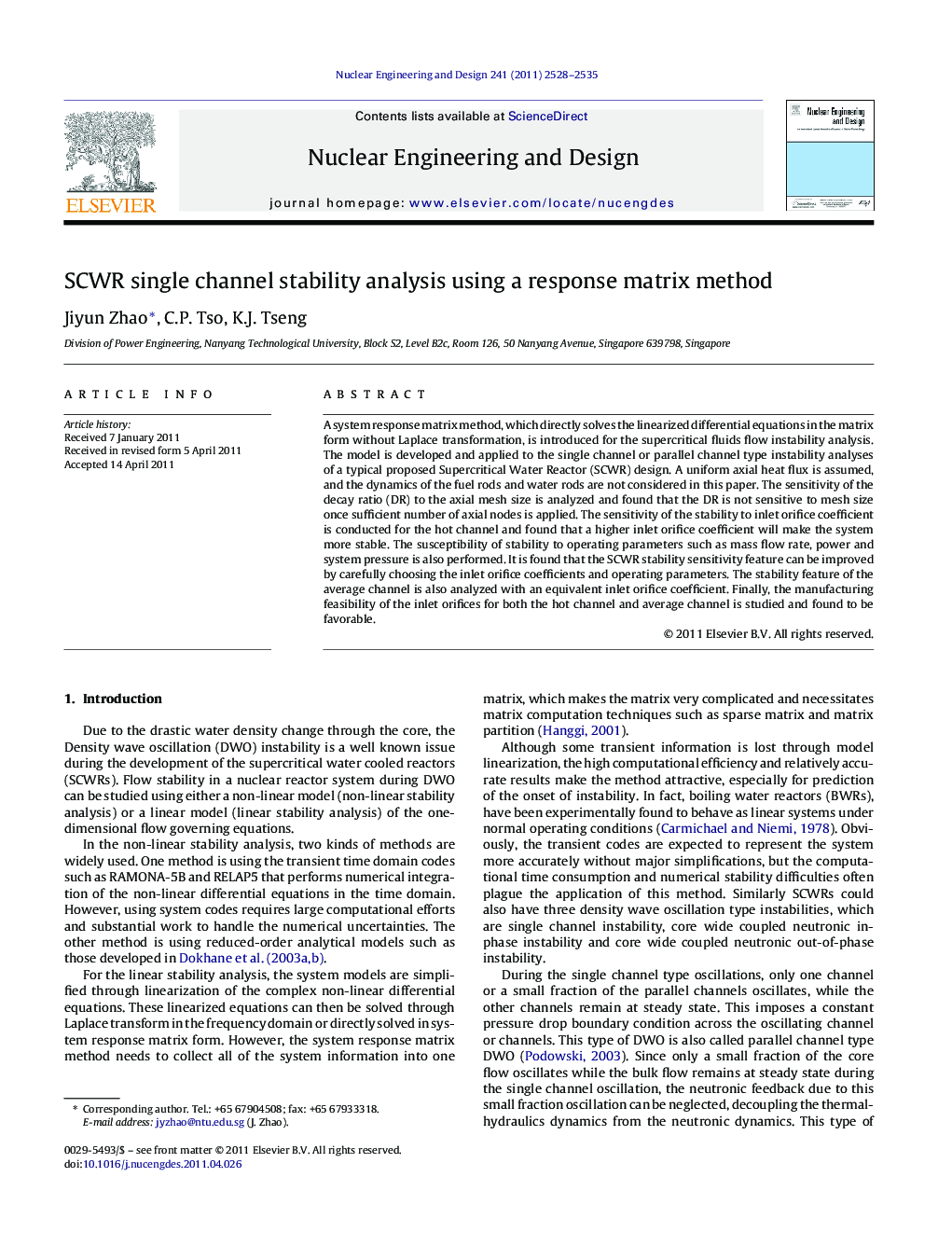| Article ID | Journal | Published Year | Pages | File Type |
|---|---|---|---|---|
| 297554 | Nuclear Engineering and Design | 2011 | 8 Pages |
A system response matrix method, which directly solves the linearized differential equations in the matrix form without Laplace transformation, is introduced for the supercritical fluids flow instability analysis. The model is developed and applied to the single channel or parallel channel type instability analyses of a typical proposed Supercritical Water Reactor (SCWR) design. A uniform axial heat flux is assumed, and the dynamics of the fuel rods and water rods are not considered in this paper. The sensitivity of the decay ratio (DR) to the axial mesh size is analyzed and found that the DR is not sensitive to mesh size once sufficient number of axial nodes is applied. The sensitivity of the stability to inlet orifice coefficient is conducted for the hot channel and found that a higher inlet orifice coefficient will make the system more stable. The susceptibility of stability to operating parameters such as mass flow rate, power and system pressure is also performed. It is found that the SCWR stability sensitivity feature can be improved by carefully choosing the inlet orifice coefficients and operating parameters. The stability feature of the average channel is also analyzed with an equivalent inlet orifice coefficient. Finally, the manufacturing feasibility of the inlet orifices for both the hot channel and average channel is studied and found to be favorable.
► A system response matrix method was developed for reactor stability analysis. ► SCWR single or parallel channel stability was investigated. ► SCWR stability sensitivity to inlet orifice and operating parameters was studied. ► A higher inlet orifice coefficient improves SCWR stability sensitivity features. ► No manufacturing difficulties for inlet orifices.
